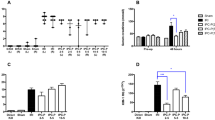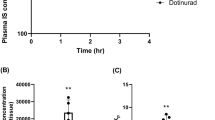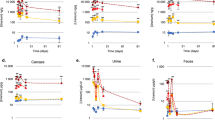Abstract
A PRONOUNCED sex difference was found to exist in the renal tubules of rats injected intravenously with minimally toxic doses of bichloride of mercury. Mercury, in toxic doses, produces an acute tubular necrosis in a wide variety of experimental animals and man1,2. Histologically, when minimally toxic doses are given to rats, the lesions are confined to the straight portions of the proximal tubules.
This is a preview of subscription content, access via your institution
Access options
Subscribe to this journal
Receive 51 print issues and online access
$199.00 per year
only $3.90 per issue
Buy this article
- Purchase on SpringerLink
- Instant access to full article PDF
Prices may be subject to local taxes which are calculated during checkout
Similar content being viewed by others
References
Simonds, J. P., and Hepler, O. E., Arch. Path., 39, 103 (1945).
Rodin, A. E., and Crawson, C. N., Amer. J. Path., 41, 297 (1962).
Eschenbrenner, A. B., and Miller, E., Science, 102, 302 (1945).
Deringer, M. K., Dunn, T. B., and Heston, W. E., Proc. Soc. Exp. Biol. and Med., 83, 474 (1953).
Shubik, P., and Ritchie, A. C., Science, 117, 285 (1953).
Hewitt, H. B., Brit. J. Exp. Med., 37, 32 (1956).
Author information
Authors and Affiliations
Rights and permissions
About this article
Cite this article
HABER, M., JENNINGS, R. Sex Differences in Renal Toxicity of Mercury in the Rat. Nature 201, 1235 (1964). https://doi.org/10.1038/2011235a0
Issue date:
DOI: https://doi.org/10.1038/2011235a0
This article is cited by
-
Continuous exposure to mercury during embryogenesis and chick development affects later survival and reproduction of zebra finch (Taeniopygia guttata)
Ecotoxicology (2020)
-
Scanning and transmission electron microscopy of mercuric chloride-induced acute tubular necrosis in rat kidney
Virchows Archiv B Cell Pathology (1975)



